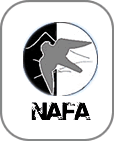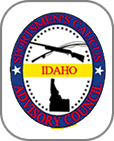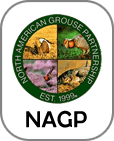On a crisp November morning, Troy Taylor, a computer technician from Star, walks out into an open field dotted with sagebrush. A hawk ruffles its feathers atop a large stand-like pole he is carrying, called a “t-perch.” There’s a sudden movement a midst the plants, and Taylor shouts, “Ho, ho, ho, ho!” a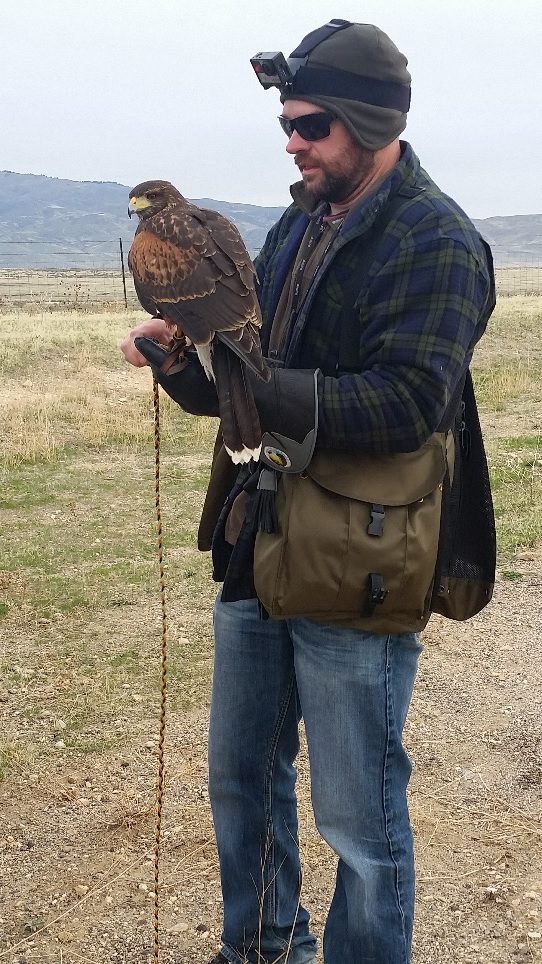 Troys he directs the hawk towards the disturbance. Immediately, the bird of prey launches from its perch and begins to track the wild rabbit that had burst through the brush. After climbing into the sky, the raptor tucks its wings and dives towards its newfound prey, falling with increasing speed. At the last moment, it extends its razor sharp talons and – “thud” – it hits its mark. Taylor rushes over to find his hawk triumphantly feasting on its downed meal, and after a few minutes he coaxes the bird off its kill with a separate piece of meat. Once the hawk is perched on his gloved arm, he then stores the unfinished rabbit for future feedings. Thrilled with the outcome of the morning, he walks back to his truck with his beloved raptor; another successful hunting trip.
Troys he directs the hawk towards the disturbance. Immediately, the bird of prey launches from its perch and begins to track the wild rabbit that had burst through the brush. After climbing into the sky, the raptor tucks its wings and dives towards its newfound prey, falling with increasing speed. At the last moment, it extends its razor sharp talons and – “thud” – it hits its mark. Taylor rushes over to find his hawk triumphantly feasting on its downed meal, and after a few minutes he coaxes the bird off its kill with a separate piece of meat. Once the hawk is perched on his gloved arm, he then stores the unfinished rabbit for future feedings. Thrilled with the outcome of the morning, he walks back to his truck with his beloved raptor; another successful hunting trip.
Nomad
Author: Bruce A. Haak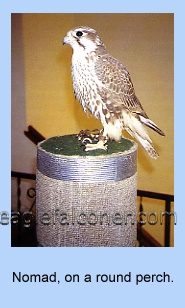 (Reprinted here with the permission of the Author)
(Reprinted here with the permission of the Author)
I called him "Nomad" because I didn't know where he had come from and I wasn't sure where he was going. Such is the nature of passage prairie falcons, winged hunters that might traverse half of the temperate latitudes of western North America during their lifetimes. The prairie falcon is North America's only indigenous falcon Prairie Falcon called Nomadspecies, and most of its habitat lies within the borders of the United States. The heart of its range and the largest concentration of eyries are in southwest Idaho, where I moved in 1984. At the Snake River Canyon, which is a short drive south of my home, huge basalt cliffs line the canyon walls. Some 15 thousand years ago, a breach in the dam of prehistoric Lake Bonneville created a canyon carved in chaos.
Creating Helga
Author: Jesse L. Woody
(Reprinted here with the permission of the Author)
"With the old hawk of Sir Ralph's, I have had grand sport. Last year, besides a heavy bag of rabbits, I killed two hares with her. I slipped her at six hares altogether, and she flew at each one with great determination, and caught them all, but four of them, after a splendid 'rough and tumble', to get the best of it, and kicked themselves free before I could get up to her assistance. One was a really magnificent struggle. I let her go at a big hare which jumped up some 40 yards ahead in a large pasture; on her first 'binding' to it, hare and hawk went twice head over heels, and then, the hawk slipping her hold, puss went on alone, leaving heron the ground; but she was not yet defeated, for she picked herself up and again overtook and struck the hare, only to be kicked off again after another struggle. A third time this plucky Goshawk made off after the hare, which managed to reach shelter under some nearby sheep."
-- Captain F.D. Bland thus relates his experience with the Goshawk.
Eyas Prairie Falcons
Can’t Live With Them, Can’t Live Without Them
Author: Eric Tabb
(Reprinted here with the permission of the Author)
While enjoying a warm, breezy late August morning out on the lawn, I gazed up on this year’s new eyas Prairie falcon “Slew Foot Sioux,” reflecting on how much we have been through together already this summer.
The fact that she is still with me is something of a miracle. Many eyas prairie falcons attempted by western falconers have gone their own way by now through some quirk of summer madness, telemetry or not. There are many issues to be resolved between a falconer and his or her young charge in the warm months following fledging. This early period is particularly difficult with this native desert species due to the propensity of fat baby prairie falcons to have a sudden change of heard about the “surrogate parent” , and bolting from the home territory. It is quite a dramatic and disconcerting phenomena; they just go insane and fling themselves toward Cheyenne. They typically can travel a long distance, putting them over rugged, roadless terrain in very short order, where telemetry often becomes ineffective. Frequently, this happens on a hot morning wind; I now fly prairies primarily in the evenings during the summer months. I lost a couple of nice prospects back in the eighties, this way, before I learned how to recognize the symptoms of “summer madness” onset.
Switchblade, M.I.A.
Author: John Hein, Meridian Idaho
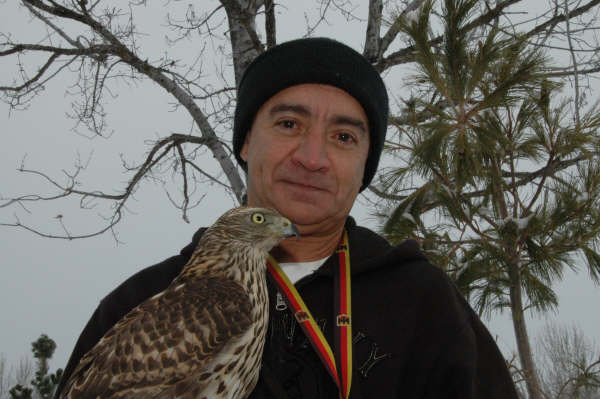
During December 2007 I hunted with a tiercel Finnish Goshawk. After getting a late start on the season, we worked as a team, bagging 17 ducks (15 drakes and 2 hens) and 2 hen pheasants. I named him Switchblade. He was quick and deadly. The 19 head of game were caught under extreme conditions of weather. Snow, rain and wind didn’t stop us. When he got pulled into the ditches, I would dive into the water after him. I did video record many unbelievable flights. After a kill, he was semi -cropped up, not gorged. On non -hunting days I would alternate conditioning and footing, using training methods that I used and developed.
Falcon Fever
Author: Tim Gallagher
Tim Gallagher Talks to Public radio about Falconry and his new book Falcon Fever.
NAFA Announcement
Dear NAFA Member,
I'm writing to let you know that it appears the publication of the new US Federal Falconry Regulations is imminent. Many state fish and game departments now have a copy of the federal regulations in their possession; this is one of the last steps before the regulations are released.
Falconry Issues Aug 2008
Letter from George Allen USFWS
Author: George Allen
29 August 2008
Folks:
I have done my best for a number of years to try to improve cooperation with falconers and propagators, to understand your issues, and to write better regulations. Recently, I've received enough questions that I feel that I should respond to a couple of issues and to an article about our work on regulations.
